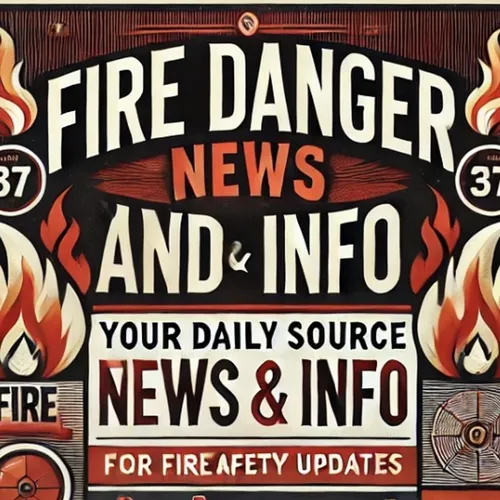Urgent Fire Danger Warnings Across the United States as Temperatures Soar and Drought Conditions Persist
- Author
- Quiet. Please
- Published
- Sat 23 Aug 2025
- Episode Link
- https://www.spreaker.com/episode/urgent-fire-danger-warnings-across-the-united-states-as-temperatures-soar-and-drought-conditions-persist--67491002
Rising temperatures and prolonged dry conditions have triggered an escalation in fire danger across large parts of the United States over the past week. The Pacific Northwest is experiencing a notable increase in fire risk as hot, dry weather combining with an easterly wind pattern heightens the potential for both new ignitions and growth on existing wildfires. The United States Department of Agriculture Forest Service states that temperatures in Oregon and Washington are forecast to rise further while humidity drops, meaning the region's already moderate fire activity could intensify. Many national forests across these states remain classified at high or extreme fire danger, and campfire bans are in place across significant areas. The Bear Gulch fire in western Washington, identified as human-caused, is currently the region's largest active wildfire. Furthermore, a persistent precipitation deficit continues to challenge firefighters, with isolated thunderstorms in the forecast that could spark additional incidents.
Jefferson County, Washington, faces similar threats and has been subject to urgent warnings from the National Weather Service, including a Fire Weather Watch and a Red Flag Warning lasting through the weekend. The Jefferson County Fire Marshal emphasized that local forests are exceptionally dry, with even green vegetation masking underlying dead fuel. High fire danger status in the region makes fires likely to start readily from most causes. Authorities have imposed strict burn bans, limiting all forms of open flame, and are urging residents to remain alert to changing conditions and have preparations in place for rapid evacuation.
In the Southwest, the Dragon Bravo Fire near the Grand Canyon’s North Rim continues to burn, largely fueled by mixed conifer and aspen regeneration following a lightning strike in early July. This fire has scorched over one hundred forty thousand acres and is sixty three percent contained as of this week. While suppression repair and hazard tree removal are underway, the potential for increased fire behavior remains, particularly as thunderstorms develop in the region. Recent modifications to forest closures have allowed renewed public access to some areas, though caution remains necessary.
Alaska also remains vulnerable to wildfire, with state officials noting dry, windy conditions and elevated fire danger in areas recently affected by large wildfires. In the Rockies and western states such as Colorado, parts of Utah and Wyoming, above normal fire potential persists as below average precipitation dominates and thunderstorms pose the threat of additional lightning-sparked blazes. National wildfire preparedness has been fluctuating, reflecting a trend of lower total acres burned than average for the year, but a notably higher number of individual fires.
Internationally, no single catastrophic wildfire has captured global headlines this week, but elevated fire danger alerts have been issued in regions of southern Europe and Australia as their respective fire seasons approach. In summary, emerging patterns across the United States point to recurring high fire risk in late summer, particularly due to shifting weather systems and persistent drought, urging continued vigilance, adherence to restrictions, and rapid response capabilities to protect both communities and landscapes.
Some great Deals https://amzn.to/49SJ3Qs
For more check out http://www.quietplease.ai
